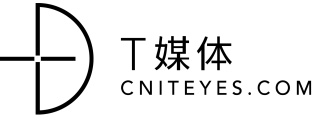如何做“设计尽职调查”——发掘投资机会的独特视角
原文作者:Ekaterina Gianelli 译者:李哲 关键词:尽职调查,产品设计,VC 核心提示:在产品设计扮演重要角色的今天,如何应用“设计尽职调查”(Design Due Diligence)了解企业设计文化,进而筛选和评估潜在投资机会?原文作者:Ekaterina Gianelli 译者:李哲 关键词:尽职调查,产品设计,VC 核心提示:在产品设计扮演重要角色的今天,如何应用“设计尽职调查”(Design Due Diligence)了解企业设计文化,进而筛选和评估潜在投资机会? 风投公司通常都会应用尽职调查来评估潜在的投资机会,决定是否投资一家公司以及对它进
 风投公司通常都会应用尽职调查来评估潜在的投资机会,决定是否投资一家公司以及对它进行估值。尽管技术、财政和法律尽职调查已经被广泛应用,但是设计尽职调查还未兴起。许多人仍然在关注产品功能,而低估了设计的价值。
如今,设计师创造的价值超过以往任何时候。设计能力弱的公司难以吸引和维系用户。
“设计尽职调查”旨在识别公司在设计思维采用上的风险和机遇,同时制定计划以降低风险、进一步发展公司的设计文化。
作为设计尽职调查的一部分,这篇文章从设计的角度探讨了成功公司的几个关键要素,即市场环境、团队、创业历程和用户体验。其中的问题列表可以作为在评估潜在投资机会时的核对表。
1、 了解市场环境
许多创业公司失败的原因是它们要解决的问题不够大,所以要评估它们的机遇、了解市场发展趋势、研究竞争环境。首先,创始人要有强烈的,和团队、投资者和用户进行有效信息传达的愿景。而设计可以使这一愿景更清晰,把它变成有吸引力的服务。但是如果愿景不够有说服力,设计也就失去了作用。
l 创始人的愿景是什么?故事够不够有吸引力?
l 他们能不能清楚地表达出来?
l 支撑这一愿景的发展趋势是什么?
l 这一发展趋势解决了用户的哪些需求?
l 这一趋势为什么会出现?
l 有没有竞争解决方案?发展趋势是怎么支撑这一方案的?
l 设计怎么帮助公司实现这一愿景?
2、 了解创业团队
人是任何行业的核心,他们的想法和执行力决定了事业成功的潜力。因此,了解团队和设计的关系十分关键。首先需要更深入地了解创始人,其次要看团队中的设计师是否感到快乐、灵感充沛。设计团队缺少权利感通常意味着公司在领导力和沟通方面面临着挑战。
l 创始人的背景是什么?
l 创始人的领导风格是什么?他们是否以身作则?
l 他们是否能吸引市场中最优秀的人才?
l 他们是否了解设计的价值?执行力如何?
l 他们能否接受反馈和新想法?
l 设计嵌入公司的深度如何?
l 设计师如何参与产品开发?
l 团队的多元化程度如何?
l 他们的愿景是否保持一致?
l 他们的核心KPI是什么?是否受用户满意度的激励?
3、 了解创业历程、方式和工具
了解公司创立的历程,有助于辨认公司是否以用户为本、协作和灵活。创业公司不仅要有设计思维,还要擅长设计的执行。
l 团队对用户的了解程度如何?
l 用户如何参与产品开发?
l 团队是否在用服务设计方法和工具?
l 公司如何进行用户调查?如何评估用户体验?
l 团队如何做出决策?
l 优化的对象是什么?速度还是质量?
4、 了解用户和用户体验
许多创业公司过度专注于发展技术而不是用户。创业团队需要对用户以及用户的产品使用经历和使用体验有深入的了解。
l 潜在的用户有哪些?精选的用户群有没有业务影响?
l 用户如何解决问题?如何做出购买决策?
l 公司的故事能否说服消费者?
l 公司的产品是什么?能否满足用户需求?
l 如今的用户体验方式是什么?
l 优势和劣势分别是什么?有没有可行的改善方案?
l 团队是否了解如何培养用户的青睐?
总结
在筛选和评估潜在投资机会时,风投公司需要注意创业公司的四个核心要素——市场环境、团队、历程和用户体验。对四个方面都有深入理解的创业公司,更有可能发挥设计的潜能,获得成功。
设计尽职调查有助于深入了解设计在公司扮演的角色,以及一系列潜在的风险和机遇。在此基础上,公司的设计文化才能进一步发展。
原文:
Design Due Diligence
Screening and evaluating early-stage investment opportunities from a design perspective.
To evaluate a potential investment opportunity, every VC firm typically runs due diligence — a process to determine whether or not to invest in the company and at which valuation. While technical, financial and legal stages of the due diligence process are already widely used in the industry, design due diligence hasn’t taken off yet. Many still focus on product functionality, and underestimate the value of design in the process of building a business.
For us, design due diligence is a process that aims at: a) identifying key risks and opportunities related to the adoption of design thinking in the company and b) developing a plan to mitigate these risks and develop design culture further.
Instead of just focusing on the look, feel and functionality of the product, we want to understand the company’s relationship to design. We believe that today more value is created by designers than ever before. Companies that struggle with design are more likely to have challenges attracting and retaining customers. We also want to understand the potential of design to increase the value of the business (and respectively our investment). Can we help the team improve by crystallising their vision? Or by involving more people in the design process? Or by introducing service design methods?
As part of design due diligence, we investigate the key elements of any successful company from a design perspective — 1) the context, 2) the team, 3) the processes, and 4) the user experience — to be able to make a more informed and objective investment decision.
Design due diligence could be conducted at the earliest stages of the investment process (e.g. screening stage, follow up meetings), or later on in the discussion. The list of questions below serves as a checklist when evaluating the potential investment opportunities (some of them might be overlapping with tech or financial stages of the process).
This framework could be used by any member of a VC firm, not only designers. At the same time, it might be a good idea to get familiar with the methods and tools that service design has to offer. Ideally, you would also involve a designer in the process or add one to your team, as there are many ways a designer can help in evaluating potential investments.
1.Understanding the context
Many startups fail, because the problems they are solving aren’t big enough. That’s why we start with assessing the opportunity, understanding the market trends supporting it, and studying the competition.
We look for founders with a strong vision that they can communicate to their team, investors, and customers. Design can help them crystallise their vision and turn it into an attractive service, but if the vision isn’t compelling enough there is not much value design can add.
风投公司通常都会应用尽职调查来评估潜在的投资机会,决定是否投资一家公司以及对它进行估值。尽管技术、财政和法律尽职调查已经被广泛应用,但是设计尽职调查还未兴起。许多人仍然在关注产品功能,而低估了设计的价值。
如今,设计师创造的价值超过以往任何时候。设计能力弱的公司难以吸引和维系用户。
“设计尽职调查”旨在识别公司在设计思维采用上的风险和机遇,同时制定计划以降低风险、进一步发展公司的设计文化。
作为设计尽职调查的一部分,这篇文章从设计的角度探讨了成功公司的几个关键要素,即市场环境、团队、创业历程和用户体验。其中的问题列表可以作为在评估潜在投资机会时的核对表。
1、 了解市场环境
许多创业公司失败的原因是它们要解决的问题不够大,所以要评估它们的机遇、了解市场发展趋势、研究竞争环境。首先,创始人要有强烈的,和团队、投资者和用户进行有效信息传达的愿景。而设计可以使这一愿景更清晰,把它变成有吸引力的服务。但是如果愿景不够有说服力,设计也就失去了作用。
l 创始人的愿景是什么?故事够不够有吸引力?
l 他们能不能清楚地表达出来?
l 支撑这一愿景的发展趋势是什么?
l 这一发展趋势解决了用户的哪些需求?
l 这一趋势为什么会出现?
l 有没有竞争解决方案?发展趋势是怎么支撑这一方案的?
l 设计怎么帮助公司实现这一愿景?
2、 了解创业团队
人是任何行业的核心,他们的想法和执行力决定了事业成功的潜力。因此,了解团队和设计的关系十分关键。首先需要更深入地了解创始人,其次要看团队中的设计师是否感到快乐、灵感充沛。设计团队缺少权利感通常意味着公司在领导力和沟通方面面临着挑战。
l 创始人的背景是什么?
l 创始人的领导风格是什么?他们是否以身作则?
l 他们是否能吸引市场中最优秀的人才?
l 他们是否了解设计的价值?执行力如何?
l 他们能否接受反馈和新想法?
l 设计嵌入公司的深度如何?
l 设计师如何参与产品开发?
l 团队的多元化程度如何?
l 他们的愿景是否保持一致?
l 他们的核心KPI是什么?是否受用户满意度的激励?
3、 了解创业历程、方式和工具
了解公司创立的历程,有助于辨认公司是否以用户为本、协作和灵活。创业公司不仅要有设计思维,还要擅长设计的执行。
l 团队对用户的了解程度如何?
l 用户如何参与产品开发?
l 团队是否在用服务设计方法和工具?
l 公司如何进行用户调查?如何评估用户体验?
l 团队如何做出决策?
l 优化的对象是什么?速度还是质量?
4、 了解用户和用户体验
许多创业公司过度专注于发展技术而不是用户。创业团队需要对用户以及用户的产品使用经历和使用体验有深入的了解。
l 潜在的用户有哪些?精选的用户群有没有业务影响?
l 用户如何解决问题?如何做出购买决策?
l 公司的故事能否说服消费者?
l 公司的产品是什么?能否满足用户需求?
l 如今的用户体验方式是什么?
l 优势和劣势分别是什么?有没有可行的改善方案?
l 团队是否了解如何培养用户的青睐?
总结
在筛选和评估潜在投资机会时,风投公司需要注意创业公司的四个核心要素——市场环境、团队、历程和用户体验。对四个方面都有深入理解的创业公司,更有可能发挥设计的潜能,获得成功。
设计尽职调查有助于深入了解设计在公司扮演的角色,以及一系列潜在的风险和机遇。在此基础上,公司的设计文化才能进一步发展。
原文:
Design Due Diligence
Screening and evaluating early-stage investment opportunities from a design perspective.
To evaluate a potential investment opportunity, every VC firm typically runs due diligence — a process to determine whether or not to invest in the company and at which valuation. While technical, financial and legal stages of the due diligence process are already widely used in the industry, design due diligence hasn’t taken off yet. Many still focus on product functionality, and underestimate the value of design in the process of building a business.
For us, design due diligence is a process that aims at: a) identifying key risks and opportunities related to the adoption of design thinking in the company and b) developing a plan to mitigate these risks and develop design culture further.
Instead of just focusing on the look, feel and functionality of the product, we want to understand the company’s relationship to design. We believe that today more value is created by designers than ever before. Companies that struggle with design are more likely to have challenges attracting and retaining customers. We also want to understand the potential of design to increase the value of the business (and respectively our investment). Can we help the team improve by crystallising their vision? Or by involving more people in the design process? Or by introducing service design methods?
As part of design due diligence, we investigate the key elements of any successful company from a design perspective — 1) the context, 2) the team, 3) the processes, and 4) the user experience — to be able to make a more informed and objective investment decision.
Design due diligence could be conducted at the earliest stages of the investment process (e.g. screening stage, follow up meetings), or later on in the discussion. The list of questions below serves as a checklist when evaluating the potential investment opportunities (some of them might be overlapping with tech or financial stages of the process).
This framework could be used by any member of a VC firm, not only designers. At the same time, it might be a good idea to get familiar with the methods and tools that service design has to offer. Ideally, you would also involve a designer in the process or add one to your team, as there are many ways a designer can help in evaluating potential investments.
1.Understanding the context
Many startups fail, because the problems they are solving aren’t big enough. That’s why we start with assessing the opportunity, understanding the market trends supporting it, and studying the competition.
We look for founders with a strong vision that they can communicate to their team, investors, and customers. Design can help them crystallise their vision and turn it into an attractive service, but if the vision isn’t compelling enough there is not much value design can add.
- What is the vision of the founders? Is the story attractive enough?
- Can they clearly communicate it?
- What are the trends supporting the vision?
- What are the needs of potential customers addressed by the trends? (e.g. entertainment, security, self-improvement, recognition)
- Why are these trends emerging now (and not earlier)?
- Are there competing solutions? How are they supported by the trends?
- How can design help the company achieve the vision?
- What is the background of the founders?
- What is their leadership style? Do they lead by example?
- Can they attract the best talent available in the market?
- Do they understand the value of design? Have they been able to execute?
- Are they open for feedback and new ideas?
- How deep is design embedded in the company? (not at all, outsourced, employee level, management level, founders level, everyone)
- How involved are designers in product development? (executing based on founders’ requests, part of the product team, in charge of the product)
- How diverse is the team today?
- Are they aligned to a common vision?
- What are their key KPIs? Are they incentivized on customer satisfaction?
- How well does the team understand their customers?
- How are users involved in product development (not at all, asked for feedback, tracked online, observed, co-creating with the company)?
- Do they use any service design methods & tools?
- How does the company carries out user research? How do they evaluate user experience (field studies, surveys, user tracking, A/B testing)?
- How do they make decisions (based on their own opinion, based on customer feedback, data-driven)?
- What do they optimize for (speed, quality)?
- Who are the (potential) customers (personas, demographics, segments)? Can selected customer segments have high business impact?
- How do the customers solve the problem today? How do they make decision to purchase?
- Will the company be able to convince the customers with their story?
- What is the current offering of the company? Does it serve the need?
- What is the customer experience today? Is there an alignment?
- What are the areas of strength and weakness? Is there an actionable plan for improvement?
- Does the team know how to grow the number of engaged customers?
评论
- 暂时没有评论,来说点什么吧







